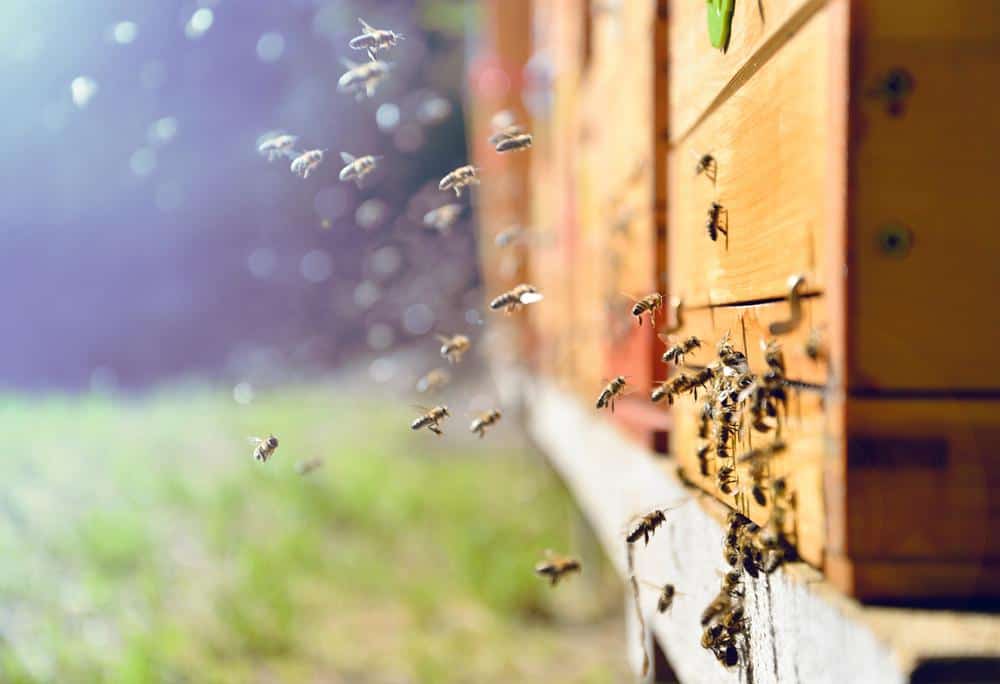
Carpenter bees are a common nuisance for homeowners. These insects bore into wood to create their nests, causing structural damage over time. In this comprehensive guide, we will explore how exterminators get rid of carpenter bees, the signs of an infestation, and how to prevent future infestations.
Exterminators get rid of carpenter bees by identifying infested areas, applying residual insecticides or insecticidal dusts, using dust formulations of insecticides or desiccant dusts, and sealing and repairing the affected areas. After the extermination, they take safety measures to ensure the household is safe and provide advice on preventing future infestations. These preventive measures include regular painting or varnishing of wood surfaces, using repellents, and sealing cracks in wood surfaces.
Identifying Carpenter Bees and Their Damage
Carpenter bees are species in the genus Xylocopa, often confused with bumblebees. However, they can be distinguished by their shiny abdomens, unlike the hairy abdomens of bumblebees. Carpenter bees can cause significant damage to wooden structures by boring into timbers and siding to construct their nests. This weakens the structural wood and leaves unsightly holes and stains on building surfaces.
Signs of a Carpenter Bee Infestation
To identify a carpenter bee infestation, look for the following signs:
- Holes in wooden structures
- Sawdust or wood shavings at the base of the wooden structure
- Yellowish-brown staining on the wood beneath the hole
- Buzzing sounds
- Presence of carpenter bees
How Exterminators Get Rid of Carpenter Bees
Exterminators use various methods to eliminate carpenter bees:
- Application of Residual Insecticides: Exterminators spray residual insecticides on areas where carpenter bees are boring into wood.
- Use of Insecticidal Dusts: Insecticidal dusts are applied in every carpenter bee hole found.
- Dust Formulations of Insecticides or Desiccant Dusts: Exterminators may apply dust formulations into nest holes using a bulb applicator.
- Sealing and Repairing: After treating the infestation, exterminators fill unoccupied holes with steel wool and caulk to prevent their reuse.
- Professional Intervention: In some cases, exterminators may use specialized equipment and pesticides to treat carpenter bee infestations.
Safety Measures During Extermination
Exterminators take several precautions to ensure the safety of the household during the extermination process. These include moving furniture away from corners, using pesticides safely, ensuring proper ventilation, and providing instructions for re-entry. They also advise keeping children and pets away from the treated areas until it is safe to return.
Preventing Future Infestations
To prevent future carpenter bee infestations, homeowners can take several measures:
- Paint or varnish exposed wood surfaces regularly
- Fill unoccupied holes with steel wool and caulk
- Use repellents like almond oil or citrus spray on wooden surfaces
- Repair any existing carpenter bee holes and seal cracks in wood surfaces
- Keep woodpiles away from the exterior of your home
- Regularly inspect your property for signs of carpenter bee infestations
In conclusion, managing carpenter bee infestations involves a combination of identification, professional extermination, and preventive measures. By taking these steps, homeowners can protect their property and prevent future damage.
Frequently Asked Questions
What time of the year are carpenter bees most active?
Carpenter bees are most active during the warmer months, particularly from early spring to late summer.
Are carpenter bees dangerous to humans?
Carpenter bees are generally not aggressive and are unlikely to sting unless provoked. However, their nesting activities can cause significant damage to wooden structures.
How do I differentiate between a carpenter bee hole and other wood-boring insects’ holes?
Carpenter bee holes are typically round and about half an inch in diameter. They are often smooth and clean, unlike the ragged holes left by other wood-boring insects.
Can I use any type of caulk to seal carpenter bee holes?
Yes, any type of commercial caulk can be used to seal carpenter bee holes. However, it’s recommended to first insert steel wool into the hole before caulking.
Why are almond oil and citrus spray effective repellents against carpenter bees?
Carpenter bees dislike the smell of almond oil and citrus. Applying these substances to wooden surfaces can therefore help deter them.









